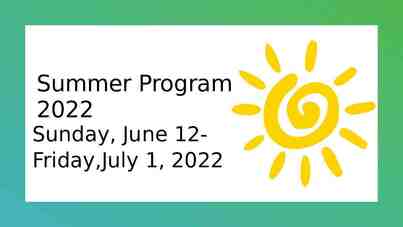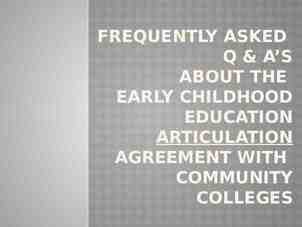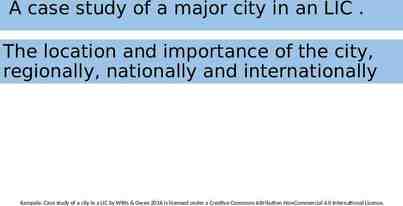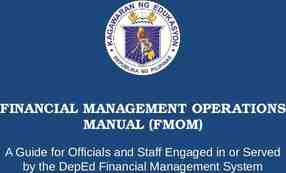1 World Development Report 2016 – Digital Dividends Key lessons of
50 Slides9.20 MB

1 World Development Report 2016 – Digital Dividends Key lessons of WDR16 and WB e-gov agenda Juan Navas-Sabater Lead ICT Policy Specialist The World Bank [email protected] The Transport and ICT Global Practice Smart Connections for All Tallinn e-Governance Conference 2016 Tallinn, Estonia May 30, 2016

2 #wdr2016 www.worldbank.org/wdr2016

3 Digital technologies have spread rapidly The world, based on internet population (2014) SOURCE: World Bank. Data at http://bit.do/WDR2016-MapO 1.

4 Digital revolution has brought many private benefits A typical day in the life of the internet SOURCE: WDR 2016 team; http://www.internetlivestats.com/one-second/ (As compiled on May 29, 2015)

5 But are countries reaping sizable digital dividends? DIGITAL DIVIDENDS Growth Jobs Services Business People Government AGENTS Are the benefits reaching everyone, everywhere?

6 Digital technologies are transforming BUSINESS DIGITAL MARKETPLACE Number of small & medium enterprises on Taobao (Alibaba): 5 MILLION & COUNTING SOURCE: http://www.alizila.com/chinas-online-cowboy-rounds-buyers

7 Digital technologies are transforming PEOPLE’S LIVES DIGITAL PAYMENTS Number of mobile money accounts worldwide: 300 MILLION & COUNTING (end of 2014) Where mobile money accounts outnumber bank accounts SOURCE: John Owens, Alliance for Financial Inclusion, June 2013.

8 Digital technologies are transforming GOVERNMENT DIGITAL IDENTITY Indians with digital identity: 950 MILLION & COUNTING SOURCE: http://www.newindianexpress.com/cities/chennai/Trafficking-Victims-see-New-life-in-Aadhaar/2015/03/30/article2737396.ece

9 The main mechanisms to promote development Expand the information base, lower information costs and create information goods SOURCE: WDR 2016

10 Digital technology can accelerate growth TRADE The internet enables more firms to reach new markets, 2001-12 PRODUCTIVITY Vietnamese firms using ecommerce have higher total factor productivity growth, 2007-12 SOURCE: Chapter 1, WDR 2016 (http://www.worldbank.org/en/publication/wdr2016) COMPETITION Average monthly trips per traditional taxi in San Francisco after Uber started operation

11 Digital technology can expand opportunities JOB CREATION Number of oDesk contractors SOURCE: Chapter 2, WDR 2016 (http://www.worldbank.org/en/publication/wdr2016) PRODUCTIVITY & CONSUMER SURPLUS Africa: Respondents that agree with each statement on benefits and use of mobile phones, 2011–12

12 Digital technology can improve service delivery CAPACITY Complaints were resolved quickly in the Nairobi water utility after the introduction of digital customer feedback SOURCE: Chapter 3, WDR 2016 (http://www.worldbank.org/en/publication/wdr2016) TRANSPARENCY e-government systems increase the transparency of government budgets, 2014

13 e-government: Significant investments in developing countries, but more focused on core public financial systems than on online services or digital IDs e-customs financial management e-procurement e-customs tax management financial management Core systems human resources e-procurement e-ID tax management e-filing e-services portal human resources 0 20 40 60 percentage of countries e-ID High income Middle income Low income e-filing e-services portal 0 20 40 60 percentage of countries High income 80 100 80 1

14 Few countries have a multi-purpose digital ID, like Estonia’s None Identification purposes only Identification and access to several services Multi-purpose digital ID, with access to a large number of online services 0 20 Percentage of countries 40 High-income countries Developing countries 60

% of individuals (ages 16-74) 15 100 80 60 45:1 40 20 top income quartile third quartile second quartile bottom quartile 0 0 20,000 40,000 60,000 80,000 GDP per capita (US ) Citizen use of eservices, however, lags supply even in the EU countries and is highly sensitive to income

16 Then why the deep pessimism surrounding the global economy? -10 Business People Governments Not because of digital technologies, but in spite of them SOURCE: Total Economy Database, Conference Board; and WDR 2016 team; Christoph Lakner and Branko Milanovic 2013; Bishop and Hoeffler 2014.

17 1. A significant digital divide remains 6 BILLION without BROADBAND 4 BILLION without INTERNET 2 BILLION without MOBILE PHONES 0.4 BILLION without A DIGITAL SIGNAL Divides persist between and within countries—in access and capability SOURCE: WDR 2016 team based on Research ICT Africa and ITU data

18 between and within countries—in access and capability SOURCE: WDR 2016 team, based on Research ICT Africa surveys (various years) for 10 African countries.

19 Digital technologies tend to be: Productivity-biased Skills-biased 0.4 Digital adoption index 30% 25% 20% 15% Core e-government systems 1.0 35% % firms with website Voice-biased 0.8 0.6 0.4 0.3 0.2 0.1 0 -0.1 10% -0.2 0.2 5% 0% -0.3 Q1 Q2 Q3 Q4 0.0 Q5 0 10 20 30 40 50 60 % of High ICT Intensity Occupations Productivity quartiles -0.4 -0.5 -0.3 -0.1 0.1 0.3 0.5 Budget transparency (index) Limiting the aggregate gains from the digital revolution SOURCE: WDR 2016 team based on Research ICT Africa and ITU data

20 2. Digital technologies hold benefits as well as risks with complements INNOVATION EFFICIENCY INCLUSION CONCENTRATION INEQUALITY CONTROL DIGITAL TECHNOLOGIES without complements What are those complements?

21 Scale without COMPETITION lower digital adoption and growing divergence SOURCE: Eurostat, circa 2014,.WDR 2016 Team

22 Automation without SKILLS polarized labor markets and greater inequality Annual average change in employment share, circa 1995–circa 2012 SOURCE: WDR 2016 team, based on ILO KILM (ILO, various years); I2D2 (World Bank, various years); National Bureau of Statistics of China (various years)

23 Information without ACCOUNTABILITY greater state control and elite capture CHANNELS IMPACT High Automating tasks Medium Citizens feedback Medium Provider management Low Free and fair elections High Informed voting Medium Collective action Low INCLUSION SOURCE: WDR 2016 Team, Pew Research EFFICIENCY GOVERNMENT CAPABILITY CITIZEN EMPOWERMENT INNOVATION SERVIC E DELIVERY Informing citizens OUTCOMES

24 User feedback is effective for some service; Example, Nairobi water utility 24

25 but citizens often not engaged: Example, LAPOR, Indonesia Percent of citizen complaints that are actionable Distribution of actionable complaints by service

26 Channel Evidence Freer and fairer elections High impact Summary of findings Digital monitoring reduces errors and fraud in voting Digital IDs increase voter registration 80 10 Perceptions of Electoral Integrity Score CRI 70 60 50 40 30 20 10 TON GRD MUS 8 STP 6 BRA TUN SLV GEO ZAF MNG COL IND BTNNPL IDNBOL UKR SRB ROU PAN PRY ECU RWA SLB NAM TUR PAKPHL MDA ALB BIH MDV IRN JORBGR CMR BWA MLI GIN FJI HUN IRQ THA MKD EGY HND SWZ MRT KEN MNE MDG ARM MOZ KHM VEN ZWE DZA MYS TGO MWI 4 BGD TJK DJI 2 AZE AFG TKM 0 1985 1990 1995 2000 2005 2010 2015 0 .2 .4 .6 Digital Adoption Index Number of electoral democracies Percentage of elections that are free and fair Source: WDR team based on Bishop and Hoeffler (2014) data and Perceptions of Electoral Integrity data .8

27 Digital technologies can reinforce socioeconomic disparities in voter participation Internet voting can increase voter participation, as in Estonia e-voters as a percentage of participating voters European Parliament 30 National National Municipal 20 European Parliament Municipal 10 National Municipal 0 2005 2010 2015 Source: WDR 2016 team based on Vassil (2015) and Spada et al. (2015) but be biased toward more privileged groups, as in Brazil

28 2 WB funded digital technology projects are more successful in countries with higher quality institutions -3 -2 Project outcome -1 0 1 Each observation represents an egovernment project, for a total of 530 projects -2 -1 0 1 Quality of institutions 2

29 Complements Race between technology and complements Complements: Index of quality of institutions, skills and regulations. Technology: Digital adoption index businesses, people and governments. Technology SOURCE: WDR 2016 team. For more details see figure 5.3 in the full Report.

30 The WDR 2016 proposes policies at three levels SECTORAL NATIONAL GLOBAL

31 SECTORAL POLICIES Making internet access universal, affordable, open and safe SUPPLY SIDE ISSUES Competition policy Public-private partnerships Effective telecom & internet regulation Mobile cellular subscriptions in the Horn of Africa

32 SECTORAL POLICIES Making internet access universal, affordable, open and safe 1993 DEMAND SIDE ISSUES Protecting personal privacy Cybersecurity Censorship and content filtering “On the Internet, nobody knows you’re a dog.” 2014 “Now Google and its like are surveillance machines that know not only that you’re a dog but whether you have fleas and which brand of meaty chunks you prefer.” (Economist)

33 NATIONAL PRIORITIES SOURCE: WDR 2016 team. Analog foundations for a digital economy

34 Emerging Transitioning Transforming Mobile phone based informational services Strengthen provider monitoring and payment Improve election monitoring Increasing the impact of e-government systems Institutionalizing user feedback on service quality Targeted transparency initiatives Integrated “whole of government” digital solutions Participatory policymaking SOURCE: WDR 2016 team.

35 GLOBAL COOPERATION International consensus on cross-border issues A governance model for an open and safe internet Removing barriers to a global digital market Leveraging information for sustainable development Get wired Build platforms Go global

36 World Bank Group vision of ICT as a tool for Economic Development TWIN GOALS OF THE WBG (ending extreme poverty / promoting shared prosperity) UN Sustainable Development Goals targets WDR Report 2016 : Developing countries should: Make the internet universal, affordable, open and safe Strengthen the analog foundations of the digital economy Improve global cooperation to address trans-boundary problems

37 World Bank Group Support to ICT More than 110 countries helped with investment and technical assistance in the ICT Sector. World Bank Portfolio 74% ICT Components More than 1,300 World Bank projects have ICT components (74% of the Bank’s portfolio). Since 2003, ICT sector reforms helped attract 30 billion in private investment. IFC: Over 2.3 billion in telecommunications infrastructure. MIGA: Over 550 million in political risks guarantees to support private investments.

38 World Bank Group Instruments Wide range of solutions to address development challenges Financing Instruments Investment Project Financing (IBRD/IDA loans/credits) Development Policy Financing Program-for-Results Trust Funds and Grants Private Sector Options Customized Options and Risk Management Services Technical Assistance Reimbursable Advisory Service Economic and Sector Work Business Advice Donor Aid Coordination

Overview of WB Digital Development Product Lines Support ICT Sector Growth & Development Support Improved Service Delivery through ICT Thematic Area #2: DIGITAL GOVERNMENT PLATFORMS & SOLUTIONS Thematic Area #1: DIGITAL CONNECTIVITY ICT strategy: Transform WDR foundations: Institutions that are capable and accountable ENABLING ENVIORNMENT ICT Enabling Environment Telecom policy and regulation Sector reform and privatization New technology and business models INFRA STRUCTURE ICT strategy: Connect WDR foundations: Regulations for competition & market entry Broadband Access for All International fiber linkages Fiber backbones Internet exchange points Last mile connectivity Digital solutions enablers: IT policy and regulation Cybersecurity and privacy IT standards and architecture Digital government infrastructure and shared services (incl. Cloud infrastructure, interoperability framework, digital identity) Mainstreaming digital solutions across sectors Intelligent Transport Systems / Logistics E-agriculture E-education E-health Additional Additional Areas: Areas: ICT ICT industry industry development development (incl. (incl. entrepreneurship entrepreneurship and and skills), skills), Internet Internet of of Things Things Big Big Data/Open Data/OpenData Data Analytics Analytics 39

Digital Connectivity (1) Digital Central Asia and South Asia (Digital CASA) Regional approach to connect Afghanistan and CA countries to each other and to the global economy Leverage private investment and know-how through PPPs Lower cost of connectivity and ICT in general Improve access to remote and rural areas within the country Create new high-quality employment in ICT sector Increased fiscal revenue and savings through taxes, transit fees and rationalized IT spending Improve public service delivery and transparency through egovernment 40

Digital Connectivity (2) “Last Mile” Access in Mongolia The World Bank financed a US 8 million (IDA Grant) to assist Mongolia in achieving a significant increase in the coverage and use of ICT services among the rural population. Challenging environment to deploy telecom infrastructure. One of the lowest population densities in the world. One million of its 2.7 million inhabitants live in rural areas (70% of them are nomadic herders). Wide variation in topography (high mountain ranges, wide plains, and desert). Output-based aid (OBA) scheme were adopted: private operators compete for a subsidy to extend their coverage to rural areas. With a Wi-Fi enabled phone, a herder living in the Arkhanghai Province can now make appointments in advance of travelling to the district center where he usually seeks veterinary services, visits the doctor, or meets with the district governor on business. All districts have been provided with mobile voice, data services and a satellite-based network of public telephones (as of end of 2012). 34 districts (10% of all districts) centers have broadband Internet access. 41

Digital Connectivity (3) European Union Connected Communities Initiative Joint WB-EC (DG CONNECT) initiative under the Connecting Europe Facility (CEF) WB providing technical assistance (TA) to a selected number of EU rural communities (14 projects) in 8 countries (Greece, Bulgaria, Slovenia, Croatia, Italy, Netherlands, Spain and Portugal) Key objective is to facilitate the efficient flow of private and public investments into broadband connectivity projects TA aimed at helping local communities prepare their projects for bankability assessment and assist them in securing financing, including from EIB and EU structural funds 42

Digital Government Platforms (1) Improvements in Rankings (UN e-Government Surveys) Countries to which World Bank has provided support (lending operation, technical assistance, etc.) have improved in international e-Government rankings. Sri Lanka Vietnam Ghana Rwanda Kenya Armenia Moldova Bangladesh Mongolia Morocco Board Approval Sep-04 Sep-05 Aug-06 Sep-06 Mar-07 Oct-10 Jun-11 Sep-12 Sep-14 expected FY17 * Intensive engagement in Morocco started in FY11 through NLTA. 2005 94 105 133 143 122 106 109 162 93 138 2008 101 91 138 141 122 103 93 142 82 140 2010 111 90 147 148 124 110 80 134 53 126 2012 115 83 145 140 119 94 69 150 76 120 2014 74 99 123 125 119 61 66 148 65 82 Delta 20 6 10 18 3 45 43 14 28 56 43

Digital Government Platforms (2) Government Cloud in Moldova The World Bank offered US 20 million to transform delivery of selected public services using ICTs under the Moldova Governance eTransformation Project. The project established cloud computing and shared platforms (MCloud) for eGovernment services. – Based on interoperability, business process simplification, and digitization. Results include: – Gov’t Services Portal provides information on 480 public services and has over 1,500 visitors per day. – 105 electronic services are ready to be consumed. – 2,134 people have been trained on ICTs. – 876 datasets from 47 authorities are available and more than 300,000 users have been benefited. 44

Digital Government Platforms (3) e-Tax with PPP in Ghana 45 The eGhana project (over US 115 million total cost), in which World Bank provided US 86.4 million (twos sets of IDA Credit) sought to improve e-Government services and develop the ITES industry. eGhana project: One of the most important components was e-Tax utilizing PPP. GeGov Platform (PPP scheme) Total Revenue Integrated Processing System (TRIPS) Domestic tax processing (Taxpayer Registration, Refunds, Case Management, etc) GeReg Business registration Civil marriages Administration of estates Newly installed Taxpayer Identification Number (TIN) registration eGhana project also provided Business processes re-engineering Top-notch soft/hardware installation Training to 2,460 gov’t officials Broaden tax base. Results 554,000 new taxpayers registered on line Increase citizen compliance and government transparency. Effective data synchronization and record-keeping in tax process. The number of days to register a business; from an average of 2 weeks to 3-5 days

46 And many other examples Armenia E-Society and Innovation for Competitiveness Project Vietnam ICT Development Project eRwanda Rwanda Regional Communications Infrastructure Program Kenya Transparency and Communications Infrastructure Project Tanzania Regional Communications Infrastructure Program eBenin Afghanistan ICT Sector Development Project Moldova Governance eTransformation Project Bangladesh Leveraging ICT Growth, Employment and Governance Project Mongolia SMART Government

47 Digital Development Partnership (DDP) The World Bank is launching a Digital Development Partnership (DDP) to help operationalize the 2016 World Development Report on Digital Dividends and to offer a platform for digital innovation and development financing. The DDP will bring public and private sector partners together to catalyze support to developing countries in the articulation and implementation of digital development strategies and plans. This partnership will make digital solutions available to developing countries with an emphasis on the following work areas: Data and Indicators Digital Economy Enabling Environment Internet Access for All Digital Government Mainstreaming Digital Innovation

48 DDP Partnering Opportunities As digital progress is fast and primarily private sector driven, DDP draws on best practices from client countries and the private sector. To this end, DDP is bringing together traditional partners from the development community and leading global IT firms. The World Bank is keen to seek inputs from potential clients, partners, and donors on strategic orientation and priority topics to be covered in the DDP work program. Potential donors are encouraged to consider a contribution to the Multidonor Trust Fund (MDTF). Launch donors will be able to shape the DDP and be involved in its implementation. A Charter will set out the day-to-day working arrangements of the partnership.

49 Connectivity Complements Digital Dividends Digital development strategies need to be broader than ICT strategies Regulations that allow firms to connect and compete Skills that leverage technology Institutions that are accountable and capable Digital technologies add two important dimensions They amplify the impact of good (and bad) policies Failure to reform means falling further behind While not a short-cut to development, they can be an accelerator, by raising the quality of complements The payoff Increasing digital dividends: Faster growth, more jobs and better services www.worldbank.org/wdr2016

50 www.worldbank.org/ wdr2016 THANK YOU! Juan Navas-Sabater [email protected]






